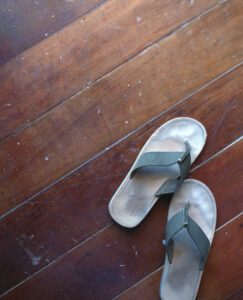
Solid hardwood and engineered wood flooring have slightly different maintenance requirements, which may affect which one is better for you.
When choosing between solid hardwood and engineered wood flooring, homeowners often weigh factors like appearance, durability, and cost. One aspect that can influence this decision is the difference in maintenance requirements. Both types of flooring offer unique benefits and challenges, and understanding these can help you make an informed choice.
Solid Hardwood Flooring
Appearance and Durability
Solid hardwood flooring is made from a single piece of wood, typically around ¾ inch thick. This type of flooring is highly regarded for its timeless beauty and durability. It can be sanded and refinished multiple times, which allows homeowners to restore its original look even after years of wear and tear.
Maintenance Requirements
- Cleaning: Regular cleaning of solid hardwood flooring involves sweeping or vacuuming to remove dirt and debris that can scratch the surface. A damp (not wet) mop with a hardwood floor cleaner is recommended for deeper cleaning. Avoid using excessive water, as it can cause the wood to warp or swell.
- Humidity Control: Solid hardwood is sensitive to changes in humidity and temperature. Maintaining a consistent indoor environment is crucial to prevent the wood from expanding or contracting. Using a humidifier in the winter and an air conditioner or dehumidifier in the summer can help maintain optimal conditions.
- Refinishing: One of the advantages of solid hardwood is its ability to be sanded and refinished. Depending on the level of foot traffic and wear, refinishing may be required every 7-10 years. This process involves sanding down the surface to remove scratches and applying a new finish to restore its appearance.
- Scratch and Dent Management: Solid hardwood is prone to scratches and dents, especially in high-traffic areas. Using area rugs, furniture pads, and maintaining pet nails can help minimize damage. Promptly addressing any scratches or dents by filling them with wood filler and refinishing the area can keep the floor looking pristine.
Engineered Wood Flooring
Construction and Durability
Engineered wood flooring consists of a top layer of real wood veneer adhered to multiple layers of plywood or high-density fiberboard (HDF). This construction provides greater stability and resistance to humidity and temperature fluctuations compared to solid hardwood. Engineered wood is typically not able to be refinished, though sometimes you can get lucky and manage a single refinish.
Maintenance Requirements
- Cleaning: Similar to solid hardwood, engineered wood flooring should be swept or vacuumed regularly to remove dirt and debris. A damp mop with a cleaner specifically designed for engineered wood is recommended for deeper cleaning. It’s essential to avoid excessive moisture to prevent damage to the veneer and core layers.
- Humidity Control: While engineered wood is more resistant to humidity changes than solid hardwood, it’s still important to maintain a stable indoor environment. Using a humidifier, air conditioner, or dehumidifier as needed can help prevent warping or separation of the layers.
- Refinishing: The ability to refinish engineered wood flooring depends on the thickness of the top veneer layer. Higher-quality engineered wood with a thicker veneer can be refinished once or twice. However, some options may not be suitable for refinishing at all. Refinishing engineered wood involves lightly sanding the surface and applying a new finish.
- Scratch and Dent Management: Engineered wood is generally more resistant to scratches and dents due to its construction. However, it’s still advisable to use area rugs, furniture pads, and maintain pet nails to minimize damage. Minor scratches can be repaired with touch-up kits, while more significant damage may require professional repair or replacement of individual planks.
Conclusion
Both solid hardwood and engineered wood flooring offer distinct advantages and maintenance challenges. Solid hardwood is highly durable and can be refinished multiple times, but it requires careful humidity control and more frequent refinishing. Engineered wood is more stable and resistant to humidity changes, with slightly easier maintenance but limited refinishing options.
Understanding what is important to you and what suits your lifestyle will help you decide which of these options is the right choice for your home.
Hardwood Flooring from Jason Brown Wood Floors
At Jason Brown Wood Floors, our commitment to quality installation is clear in all that we do, which is why our customers consistently rate us as one of the top contractors in the region. We have been awarded Baltimore Magazine’s Best of Baltimore Award 4 times and have been proudly serving the Baltimore Area for over 18 years. If you’re ready to speak with someone about your hardwood flooring project, we want to hear from you! Contact us at 410-668-9131 or send us a message here.
Jason Brown Wood Floors is also your convenient dealer of high-quality, professional-grade power tools. We offer brands that tradespeople trust most for the job. Come check out our Abingdon showroom to browse the in-stock selection of products and tools by Festool, Freud, Diablo, Shaper, Mirka, Makita, Saw Stop, and Grex.
Keep up with us on Facebook, Twitter, Pinterest, Houzz, and YouTube, and check out our blog for more news and information!
This entry was posted on Thursday, July 11th, 2024 at . Both comments and pings are currently closed.

